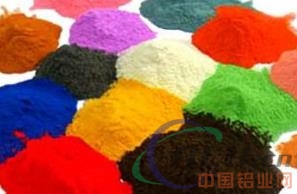
[China Aluminum Network] Particles coated with powder coating are particles protruding from the surface. Particles can be said to be a lethal damage to the decorative appearance of the outer coating, and ultimately affect the level of coating products. The presence of particles in the powder coating is inseparable from the characteristics of the powder coating, the production technology, and the current state of the coating. The non-filterability of the powder coating determines the presence of particle problems in the powder coating. The following describes in detail the presence of powder coating particles and how to reduce the presence of particles.
Presence and prevention of mechanical impurity particles
The mechanical impurity particles mainly originate from the material itself and its production process, equipment wear, and debris introduced into the powder coating production environment.
(1) In the resin, due to the richness of raw materials or the introduction of various mechanical impurities in the production process, the shape of the particles formed by the mechanical impurities is sharp. It is necessary to request resin manufacturers to use qualified raw materials, adhere to a clean production environment, strictly control production techniques, and adopt corresponding filtering methods.
(2) Impurities in pigments. With regard to titanium white, tantalum, calcium, etc., some low-quality products are rich in coarse gravel and black debris, to the extent that they are bound to form particles in the coating. With respect to particles, pigment fillers that are finer and have no screening residue over 325 mesh do not simply exhibit particles; the coarser the pigment filler, the simpler the particle appears. However, if the pigment filler is too fine, the oil absorption will increase, and then the leveling of the powder coating may be affected. This requires that the pigment filler must have a reasonable particle size and the presence of coarse particles must be strictly controlled.
(3) During the production process of the powder coating, there may be metal shavings due to wear in the grinding hall and falling of the components.
(4) Fabric fibers can also constitute the presence of particles. Some powder coating factories use fabrics tied to the ingredients outlet or the product packaging mouth. When the fibers are worn for a certain period of time, the fibers fall into the material or commodity and there are strings of particles. In the pre-mixed position, mechanical impurity particles can also be carried in, including dust and other impurities carried on the outside packaging, and the packaging (paper, plastic fiber, packaging line, etc.) is dropped into the mixer. Therefore, these sections must be checked at any time to reduce the presence of particles.
Colloidal particles
The shape of the colloidal particles is relatively round, and the number is also relatively large. It is mainly due to the extrusion process during the production process of the applied resin and powder coating.
(1) Colloidal particles in the resin. During the production process of the resin, the reactor may be partially overheated, or the mixing may be unfavorable, so that the entire batch may have excessively large molecular weight and extremely high melting point colloidal particles. These colloids may not be melted during the extrusion process of the powder coating production, and it is difficult to be broken into too fine particles in the subsequent destruction process. If the colloid particles are mixed in the normal powder coating, the coating is sprayed. After curing, it may constitute particles in the coating.
(2) The extrusion process during the production of powder coatings is a primary factor for the presence of particles. On the one hand, it may be the device itself; on the one hand, it may be a technical control, or the temperature is too high, or it may be squeezed out of idle material. Extruder temperature is usually set at about 110 °C, mixed type, polyester type, epoxy type and other thermosetting powder coatings usually do not have a chemical reaction at this temperature and cause the material to gel, but the extruder screw There is always a gap between the tube and the cylinder, and the longer the operation, the larger the gap, the more material may be left. In addition, there may be a certain dead space between the screw and the screw stalk, so there may be some residual material. The effect of the material at a temperature of 110°C for a long period of time, there will be a chemical reaction, and then appear gelled, become a material that can not be re-melted. Regardless of the type of extruder, the presence of gels in the extrusion process cannot be prevented, but there are far fewer gels present in extruders with small voids, suitable aspect ratios, and strong self-cleaning capabilities.
Submersible Slurry Pump,Ash Slurry Submersible Pump,Submersible Mud Pump,Submersible Sludge Pump
Zhengzhou Shenlong Pump Industry CO.,Ltd , http://www.waterpump-manufacturer.com